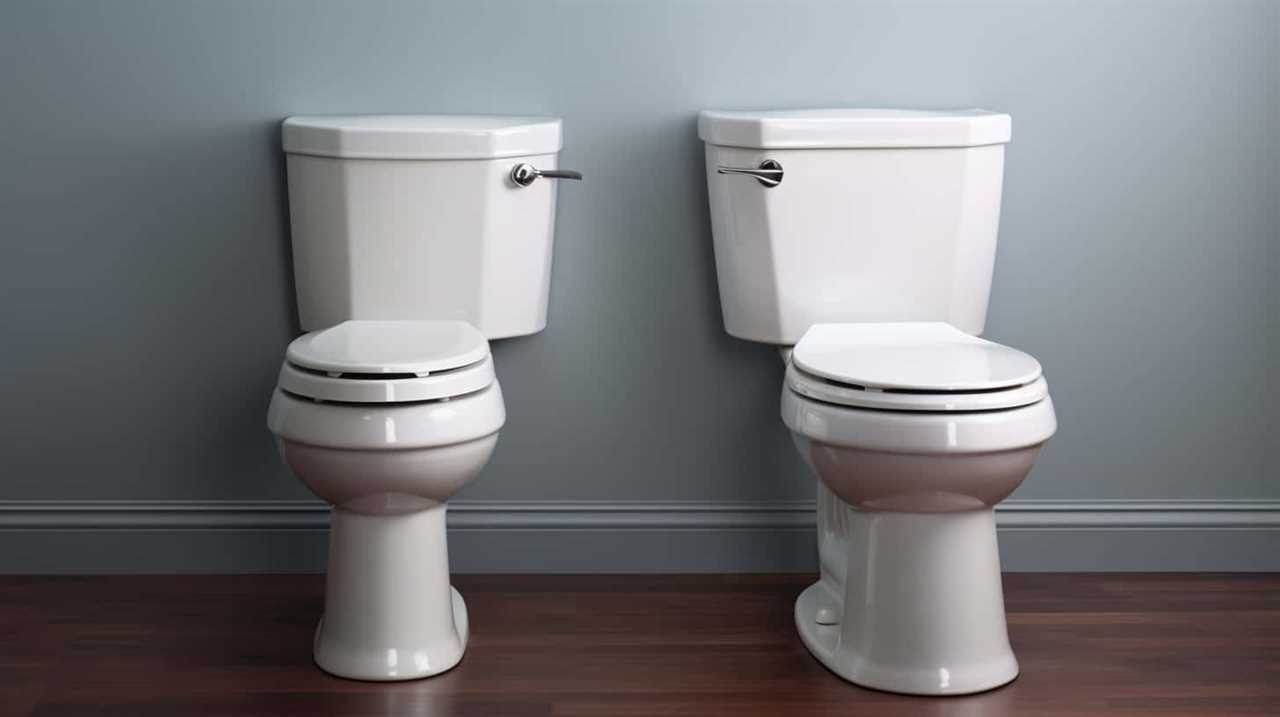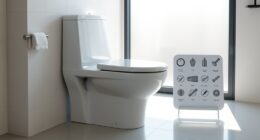Were you aware that in cold climates, a toilet can actually freeze? Indeed! Freezing temperatures have the potential to inflict significant harm on your home’s plumbing infrastructure.
In this article, we will explore the factors that contribute to toilet freezing, the signs to look out for, and the preventive measures you can take to avoid this common winter problem.
So, if you want to ensure the smooth functioning of your toilet during the cold months, keep reading for some valuable insights and expert tips.
Key Takeaways
- Lack of insulation in pipes and tank can cause freezing.
- Location in unheated areas like basements or garages increases susceptibility to freezing.
- Regular maintenance and inspection help identify potential causes.
- Insulating the toilet tank and pipes minimizes the risk of a frozen toilet.
Understanding Toilet Freezing
To understand toilet freezing, we must examine the factors that contribute to this phenomenon.

Toilet freeze prevention is crucial in cold weather to avoid costly repairs.
One of the most common causes of toilet freeze is the lack of insulation in the pipes and tank. When the temperature drops, the water inside the toilet can freeze, leading to blockages and potential damage.
Another factor is the location of the toilet. If it’s in an unheated area, such as a basement or garage, it’s more susceptible to freezing.
Additionally, drafts and cold air leaks can contribute to toilet freeze.

Understanding these common causes of toilet freeze is essential for implementing effective prevention measures.
Now, let’s explore the factors affecting toilet freeze in more detail.
Factors Affecting Toilet Freeze
One factor that contributes to toilet freeze in cold weather is the lack of insulation in the pipes and tank. Insulation plays a crucial role in preventing freezing because it helps retain heat and maintains a stable temperature inside the toilet system. Without proper insulation, the pipes and tank are more susceptible to the cold temperatures, leading to freezing.
Another common cause of toilet freeze is the presence of drafts or air leaks around the toilet area. These drafts can allow cold air to enter the toilet system and lower the temperature, increasing the risk of freezing. It’s important to seal any gaps or cracks and ensure proper insulation to prevent toilet freeze in cold weather.

Regular maintenance and inspection of the toilet system can also help identify and address potential causes of freezing.
Temperature Threshold for Freezing
The temperature threshold at which a toilet can freeze in cold weather depends on several factors. To prevent freezing and ensure proper winter toilet care, it’s crucial to understand these thresholds.
Generally, water freezes at 32 degrees Fahrenheit (0 degrees Celsius). However, toilets are often located in enclosed spaces, such as bathrooms, where the temperature can be slightly higher than the outside temperature. Therefore, toilets may freeze at temperatures slightly below 32 degrees Fahrenheit (0 degrees Celsius).
Additionally, factors such as insulation, exposure to drafts, and proximity to exterior walls can impact the temperature threshold for freezing. By taking these factors into consideration, homeowners can take necessary precautions to prevent freezing and potential damage to their toilets.

Transitioning to the next section, let’s now explore the risks and damages of a frozen toilet.
Risks and Damages of a Frozen Toilet
Now, let’s delve into the risks and damages that can be caused by a frozen toilet.
When a toilet freezes, the most significant risk is the potential for burst pipes. As water freezes, it expands, exerting pressure on the surrounding pipes. This increased pressure can cause the pipes to crack or burst, leading to water leaks and extensive water damage.
The consequences of prolonged freezing are equally concerning. If a toilet remains frozen for an extended period, the stagnant water inside can become a breeding ground for bacteria and mold. Additionally, the frozen toilet may become unusable, causing inconvenience and discomfort for the occupants.

To mitigate these risks and damages, it’s crucial to take necessary precautions, such as insulating pipes and keeping the toilet warm during cold weather.
Signs of a Frozen Toilet
We should look out for signs of a frozen toilet by checking for ice buildup around the toilet bowl and a lack of water flow during cold weather. Here are some key indicators that your toilet may be frozen:
- Ice accumulation on the exterior of the toilet bowl or tank
- Unusual frost or condensation on the toilet surfaces
- The toilet bowl feels cold to the touch
- Water not refilling in the toilet tank after flushing
- Slow or no water flow when attempting to flush
If you notice any of these signs, it’s crucial to address the issue promptly. To thaw a frozen toilet, you can try using a hairdryer or applying warm towels to the affected areas. If these methods fail, it’s recommended to contact a professional plumber for assistance.
By being aware of these signs and taking appropriate action, you can prevent further damage to your toilet and plumbing system.
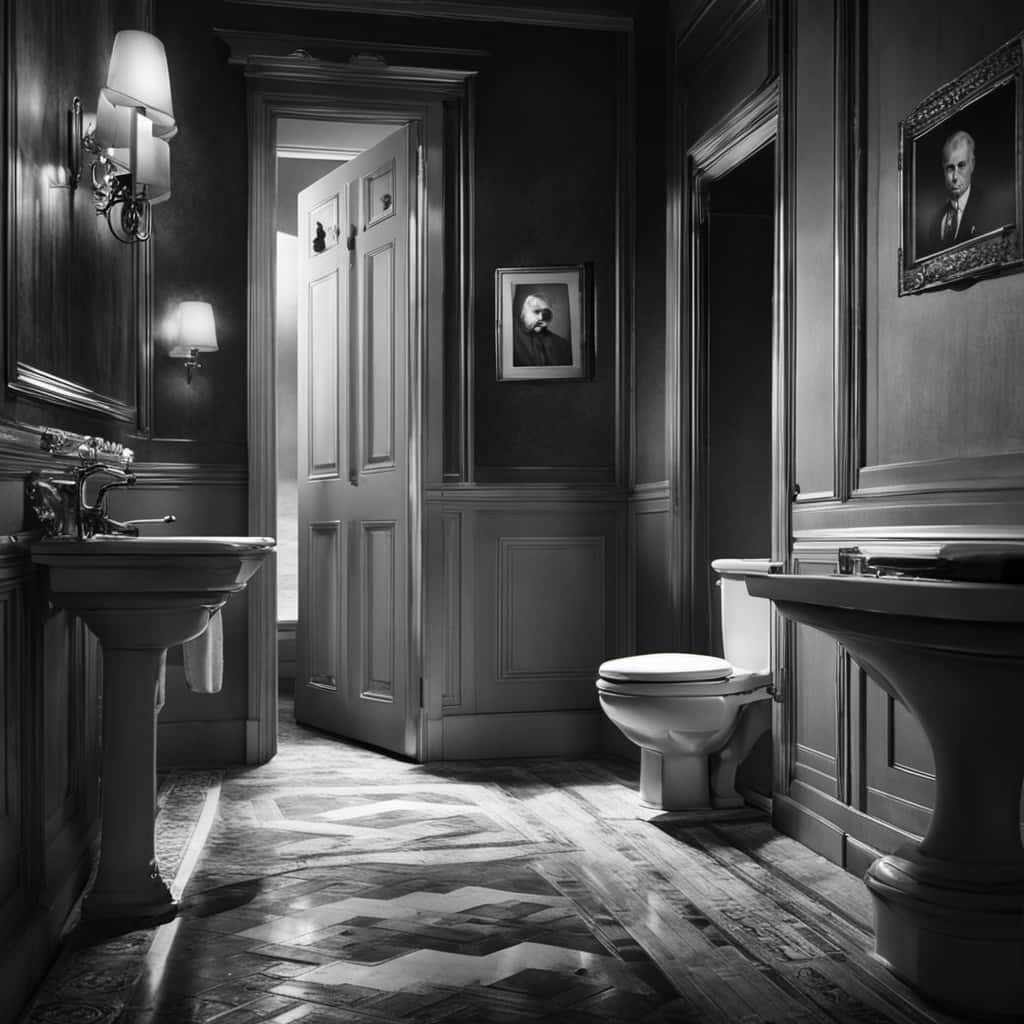
Now, let’s explore the preventive measures for toilet freeze.
Preventive Measures for Toilet Freeze
To prevent a toilet from freezing in cold weather, one effective measure is insulating the toilet tank and pipes. Insulating the tank and pipes helps to maintain the temperature and prevent freezing. One way to insulate the toilet tank is by using a toilet tank liner or insulation kit. These kits are readily available in hardware stores and are easy to install.
Additionally, insulating the pipes can be done using foam pipe insulation. This insulation helps to protect the pipes from freezing temperatures. By insulating both the tank and pipes, you can minimize the risk of a frozen toilet and ensure proper functioning during the winter months.
Now, let’s explore the process of insulating your toilet for winter.

Insulating Your Toilet for Winter
To ensure that your toilet remains functional and doesn’t freeze during the cold winter months, it’s essential to consider proper insulation. Here are some toilet insulation options that can provide an effective barrier against freezing temperatures:
- Insulated toilet tank liners: These liners are designed to fit snugly around the toilet tank, preventing heat loss and keeping the water inside from freezing.
- Insulated toilet seat covers: These covers help to maintain a comfortable temperature and reduce the risk of freezing when sitting on the toilet.
- Insulating foam kits: These kits include foam insulation that can be applied to the walls and floor around the toilet, providing additional protection against cold air infiltration.
- Pipe insulation: Wrapping the exposed pipes with insulation sleeves can prevent them from freezing and bursting.
- Caulking: Applying caulk around the base of the toilet can help seal any gaps and prevent cold air from entering.
Insulating your toilet offers several benefits, including preventing freeze-ups, reducing energy consumption, and maintaining a comfortable bathroom temperature. By implementing these insulation options, you can ensure that your toilet remains functional and reliable throughout the winter season.
DIY Solutions to Prevent Freezing
One effective DIY solution to prevent toilet freezing in cold weather is insulating the pipes. By properly insulating the pipes, you can protect them from the freezing temperatures and ensure a smoothly functioning toilet during the winter months.
Toilet insulation can be achieved by using various materials such as foam pipe insulation, heat tape, or even newspaper. These materials help to trap heat and prevent the pipes from freezing.

Here is a table outlining different DIY plumbing solutions for toilet insulation:
| Solution | Materials Needed | Steps to Follow |
|---|---|---|
| Foam pipe insulation | Foam pipe insulation sleeves, duct tape | 1. Measure the length of the pipes 2. Cut the foam insulation sleeves accordingly 3. Wrap the sleeves around the pipes and secure with duct tape |
| Heat tape | Heat tape, electrical tape | 1. Measure the length of the pipes 2. Wrap the heat tape around the pipes, ensuring that it covers the entire length 3. Secure the heat tape with electrical tape |
| Newspaper insulation | Newspapers, plastic wrap, duct tape | 1. Crumple newspapers and wrap them around the pipes 2. Cover the newspapers with plastic wrap 3. Secure with duct tape to prevent moisture damage |
When to Call a Professional Plumber
When it comes to plumbing issues, there are certain signs of major damage that should prompt you to call a professional plumber. These signs may include:
- Water leaks
- Sewage odors
- Continuously running toilets
Additionally, complex plumbing issues, such as problems with the main water line or sewer line, shouldn’t be tackled on your own and require the expertise of a professional.
Signs of Major Damage
If we notice any of the signs of major damage to our toilet, it’s essential that we call a professional plumber immediately. Ignoring these signs can lead to further issues and costly repairs.
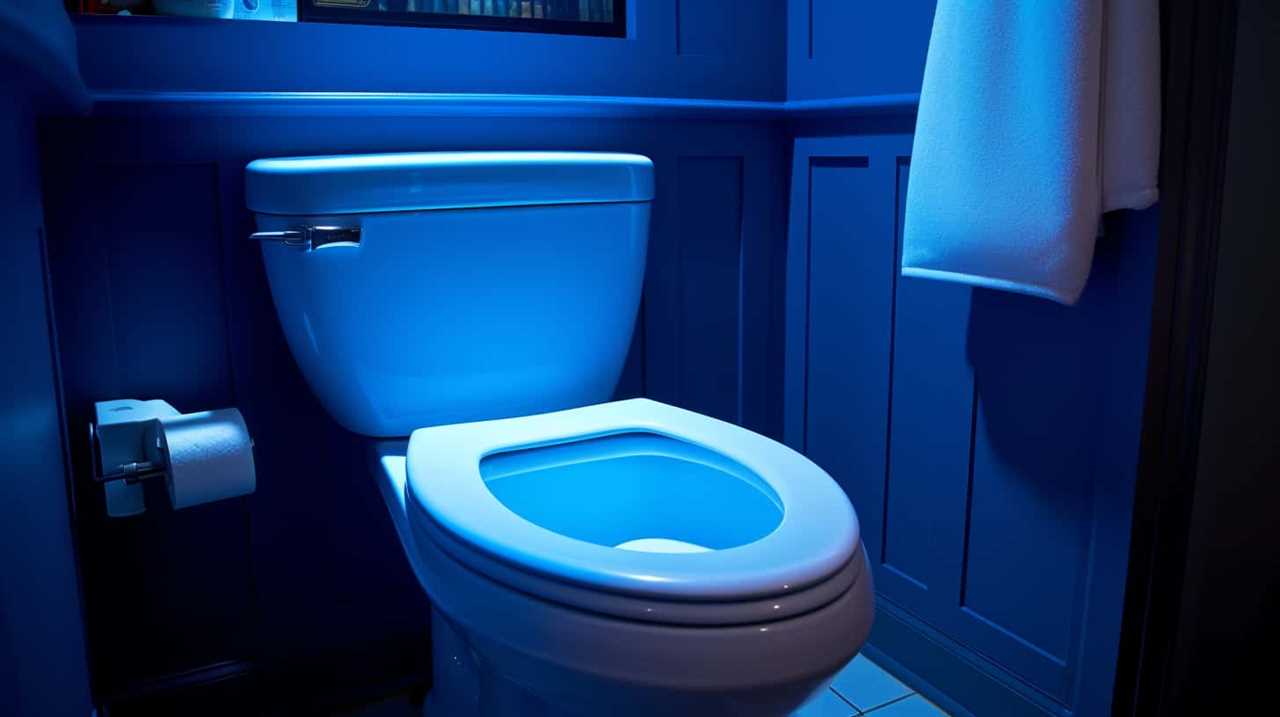
Here are five signs of major damage to look out for:
- Water leaks: If there are leaks around the base of the toilet or from the tank, it indicates a problem that needs immediate attention.
- Constant running water: If the toilet keeps running even after flushing, there may be a problem with the flapper valve or the fill valve.
- Weak flushing: If the toilet isn’t flushing properly or requires multiple flushes, it could be a sign of a clogged drain or a problem with the flush valve.
- Cracks or breaks: Any visible cracks or breaks in the toilet bowl or tank can lead to leaks and should be addressed promptly.
- Sewage backup: If sewage starts backing up into the toilet or other drains, it indicates a serious issue with the sewer line that requires immediate professional assistance.
Complex Plumbing Issues
To address complex plumbing issues, we should promptly contact a professional plumber to ensure the proper resolution of any problems with our toilet. A professional plumber has the knowledge and tools to identify the underlying cause of the issue and implement the appropriate solutions. They can also provide guidance on how to prevent future occurrences of frozen pipes and other complex plumbing problems.
When it comes to plumbing emergencies, such as frozen pipes, it’s crucial to seek the expertise of a professional. Frozen pipes can cause significant damage to our plumbing system and lead to costly repairs if not addressed promptly. Don’t hesitate to call a professional plumber when faced with complex plumbing issues to avoid further damage to your toilet and ensure a swift and effective resolution.
Emergency Plumbing Situations
For complex plumbing issues like frozen pipes, it’s crucial to promptly contact a professional plumber to ensure the proper resolution and prevent further damage to our toilet. When faced with emergency plumbing situations, it’s important to recognize the signs and know when to call for help.
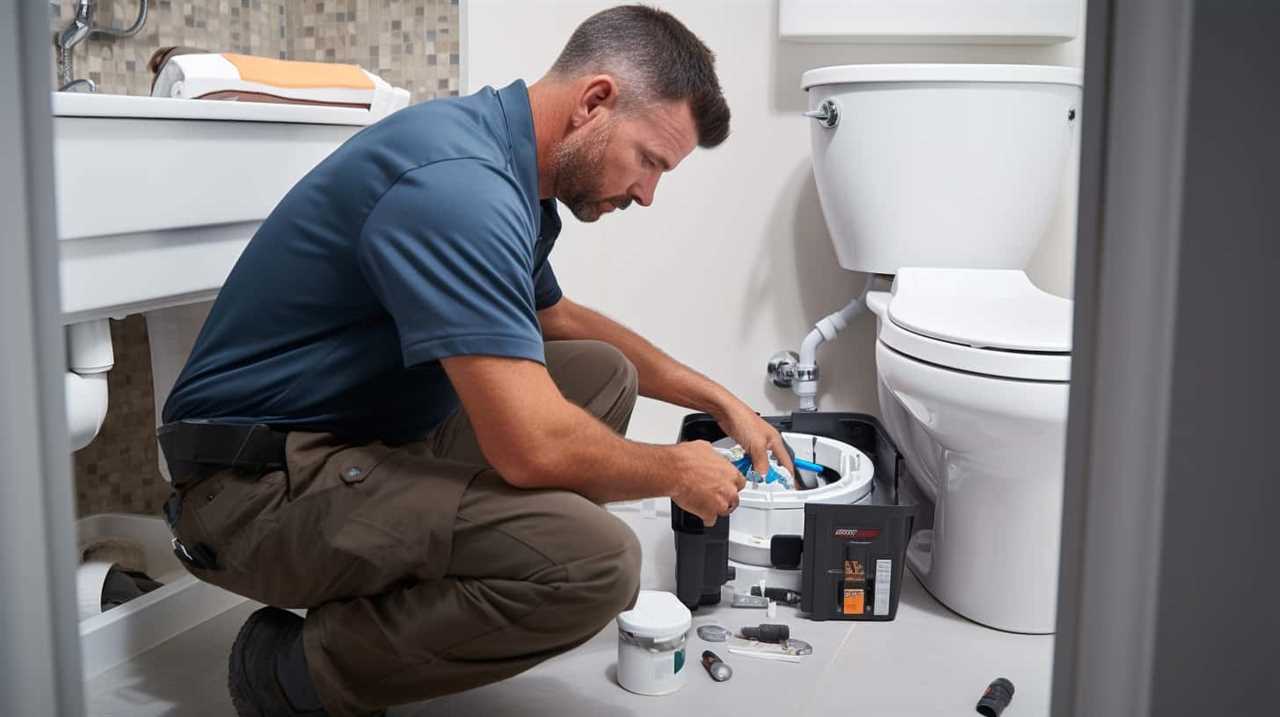
Here are some common causes of toilet clogs that may require emergency plumbing services:
- Blockage due to foreign objects such as toys or sanitary products.
- Build-up of hair, grease, or soap scum in the pipes.
- Tree roots infiltrating the sewer line.
- Damaged or deteriorated pipes leading to leaks or bursts.
- Faulty or malfunctioning plumbing fixtures, valves, or seals.
Conclusion
In conclusion, understanding the factors that can cause a toilet to freeze in cold weather is crucial for preventing damage and inconvenience.
By insulating your toilet and taking preventive measures, such as leaving the bathroom door open and running a small heater, you can minimize the risk of a frozen toilet.
For example, in a case study, a homeowner in a frigid climate insulated their toilet tank and pipes, preventing freezing and avoiding costly repairs.
